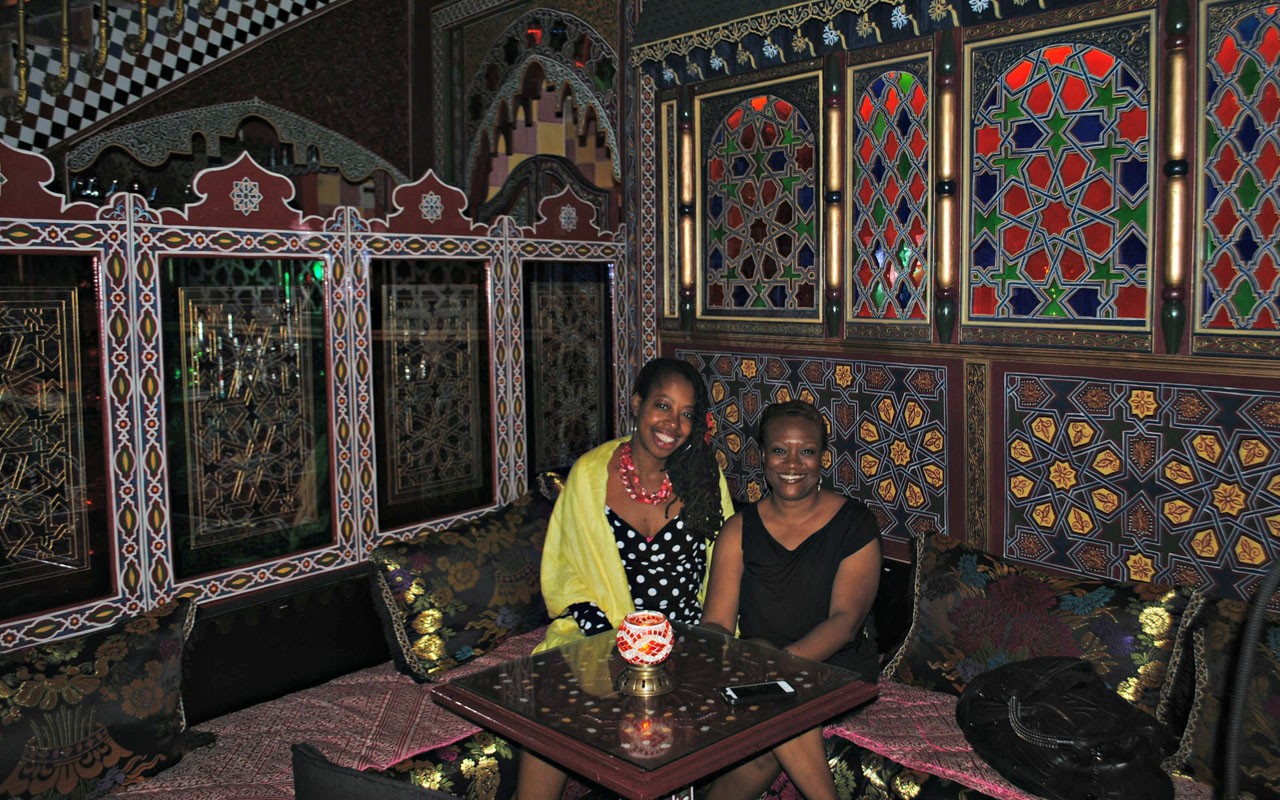[ad_1]
Gazing out from the roof of an alcazaba (fortress), I drank in the clusters of ancient adobe rooftops and whitewashed buildings that spread out over the hills of Granada, Spain. Standing on the grounds of the Alhambra—a fabled complex of palaces, mosques, fortresses and gardens constructed in the 13th and 14th centuries—I marveled at the spectacle. It wasn’t just the beauty that struck me, but the fact that this famous UNESCO World Heritage Site was just one of the legacies left by Moorish culture that remains a significant part of Spanish history.
I’d journeyed to Andalucía, the region of southern Spain that was ruled for seven centuries by the Moors (Berbers who crossed into Spain from northern Africa), specifically to witness the influences left by their presence, and I wasn’t disappointed. Moorish tradition covered not only the architecture but also the art, food and design of the villages that dot the region’s provinces.
RELATED: PAMPLONA: MORE THAN JUST BULLS [PHOTOS]
There’s a reason the architectural marvels of the Alhambra Palace attract around 7,000 visitors a day. Rising from a hill overlooking Granada, the Alhambra displays the rich history and artistic glory of the Moors in a sprawling monument that spans four distinct zones: the Palacios (palaces), the Alcazaba (fortresses), the Medina (city) and the Generalife (villa and gardens).
From the 12th to 15th centuries, about 1,000 people lived within the Alhambra’s elaborate walls, and you can feel the energy from centuries of bustling activity. Exploring the Alhambra is an all-encompassing experience; the sheer number of buildings, designs and details overwhelmed me. What struck me was that every single tile, etching and shape represented a specific meaning to the culture and Islamic religion.
Poetry is embedded all over the walls and ceilings of the palaces, and the motto of the Nasrid dynasty (“There is no winner but God”) appears 1,000 times throughout the Alhambra. Personal highlights included the intricacy of the painted tiles and gold leaf artwork, the lush splendor of the gardens, and the simple beauty of the Courtyard of the Lions—made famous by Washington Irving’s book, Tales of the Alhambra.
Another aspect of Moorish culture woven throughout Andalucía is the culinary influence. From the orange trees (introduced by the Moors) that line the streets, to the spices that fill many dishes, the impact is remarkable. Spanish gastronomy hallmarks like paella, gazpacho and almond pastries all owe their existence to the Moors.
I was excited to sample the Nasrid menu (which interprets traditional recipes enjoyed by the sultans of the Alhambra) at the Parador de Granada, a historic hotel on the grounds of the Alhambra. My first surprise was, not only did the Moors introduce foods but also designed the order of the meal: starters, fish, meat and dessert.
I tasted a delicate harisa soup made with chicken stock and brimming with spices, traditionally consumed during Ramadan. It was accompanied by a briwat, a pastry filled with chicken, which was a popular item in the suq market. Next was sea bass encrusted with spices and a vegetable stew that’s reflected today in tayines. Stewed veal with apples and aubergines, a mainstay fruit in Moorish cuisine, followed. It was all topped off with zalabiya, a fried pastry filled with fruit and myrtle sorbet.
The sultans would direct mule drivers to collect snow from the surrounding Sierra Nevada Mountains for refreshing desserts. Myrtle holds a special place in Moorish tradition as the plant of eternity and divine forgiveness. Sultans were buried with branches of myrtle.
Although Spain is mostly a coffee drinking country, I was delighted to discover teterias (tea houses) lining Granada streets. Thanks to the Moorish tea tradition, I roamed all over Calle Calderia Nueva, a street famous for its tearooms, and sampled the aromatic array. I settled into a Morrocan teteria, which served up tea in silver teapots poured in the high angles that produce swirling, strong cups.
Heading up to the Las Alpujarras mountain region of Andalucía, I glimpsed another Moorish legacy. The area forms the last stronghold of the Moors, who fled into the mountains after the Spanish Inquisition. Viewing the alabaster-hued villages perched on the Southern tip of the Sierra Nevada Mountains is an arresting sight. The flat clay roofs and boxy terraces that dominate the houses and reflect traditional Berber architecture can still be seen today in the mountains of Morocco.
Strolling into the tiny village of Pampaneira, home to about 300, I was greeted with immediate friendliness. A climb up through the steep and winding streets revealed the Moorish innovations of narrow passageways to encourage air flow and trickles of water flowing through sidewalk paths to refresh the air. A visit to Trevelez, the highest point in mainland Spain, left me gazing at stunning vistas once again. Only this time, the vibrant blues and greens of traditional Moorish ceramics also filled my vision, reinforcing the culture’s ubiquitous presence in Spain.
—Rosalind Cummings-Yeates
[ad_2]
Source link

